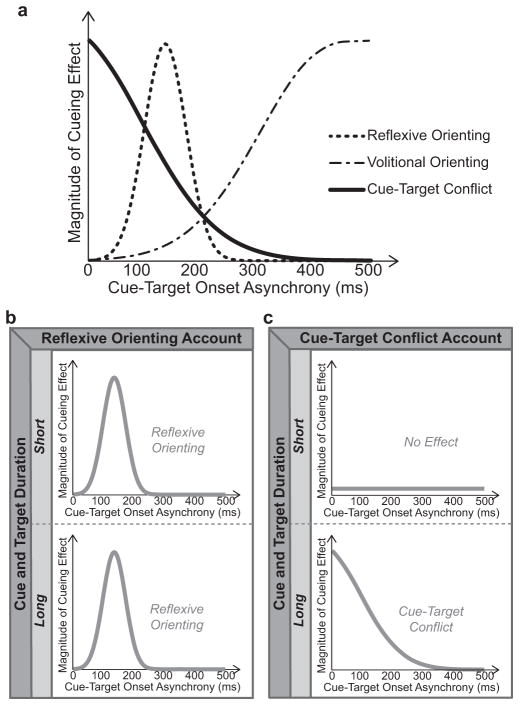Figure 1.
The expected pattern of cueing effects over cue-target onset asynchronies for reflexive orienting, volitional orienting, and cue-target conflict (a). The pattern of cueing effects predicted by a reflexive orienting account (b) versus a cue-target conflict account (c). For both possible outcomes, the top graph shows the expected pattern for short-duration stimuli and the bottom graph for long-duration stimuli.

